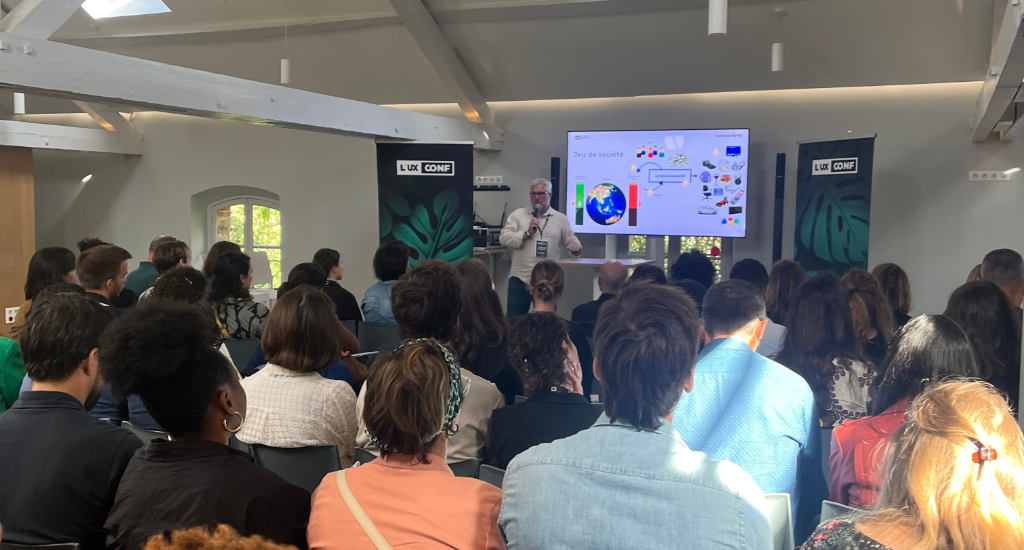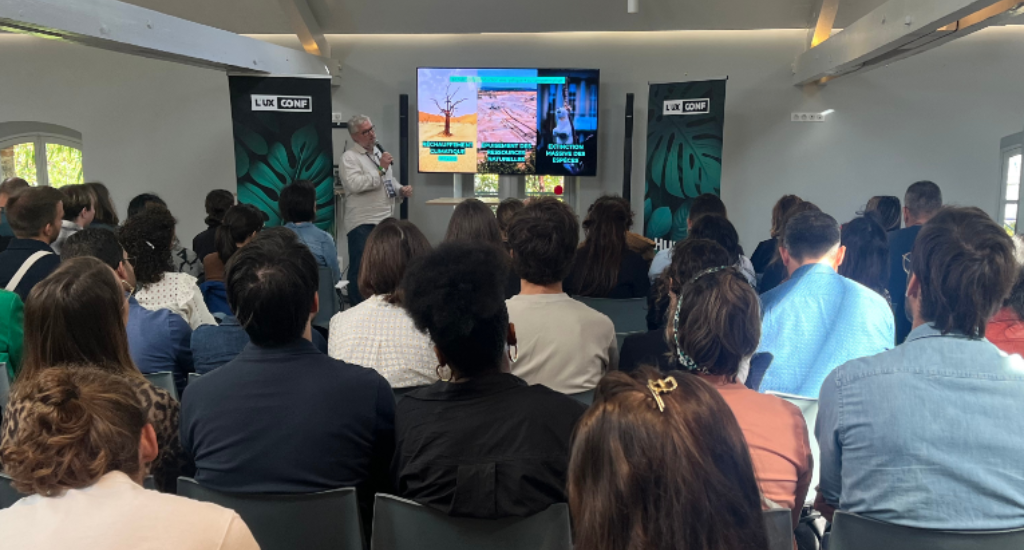This article retraces the conference given by Christophe Clouzeau, head of the ecodesign division at Temesis, during the first edition of UX-Conf – Human First which was held in Paris in 2023. It focuses on ecodesign and responsible digital technology. .
An expert in Green-UX and digital Ecodesign at Temesis for 4 years, Christophe Clouzeau has had a particular interest in the environmental and social impact of digital technology for more than 15 years. Its introduction is therefore based on an alarming observation: humanity must face 3 enormous challenges: global warming, the mass extinction of species and the depletion of natural resources.
The impact of digital in France
According to the calculation methods, the French population presents a carbon footprint around 10 to 11 tonnes of CO2 per person (calculate yours by clicking HERE). The objective defined by the Paris Agreements at COP 2021 is to reduce this footprint to 2 tonnes. But at a time when the production system is very high, dividing our carbon footprint by 5 seems very complex.
THEdigital environmental footprint is constantly increasing. If there is no change in fact, it should double in the next 15 years.
How is this digital footprint distributed?
- The user terminals and Internet users : this is where consumption is highest in energy, greenhouse gases, waste, water and resource consumption. Indeed, 70% to 80% of these impacts are linked to resource extraction (sorting, pure components, transformation, assembly, delivery, etc.).
- The network infrastructure (targets, fibers, satellites, etc.).
- The service servers hosted in data centers or data centers.
Digital consumption: before and after?
Is this footprint justified in view of developments? Have our uses really evolved?
According to Christophe Clouzeau, this is not the case. Indeed, in 1995, the weight of a web page was 14 KB compared to 2300 KB in 2022. Thus, he denounces “an obese digital world”, and notably gives the example of the GIEC site which consumes more than 7 MB per page with more than a hundred requests sent.
The objective to be implemented: limit planned obsolescence.
But what do we have available to act?
The desire for eco-design: tools, guides and standards
Tools
There are various tools that allow you to measure the environmental footprint at different levels (front, back, cloud, servers, in production and on development environments).
Laws
A roadmap “digital and environment” ou “Green tech” was set up by the government to converge digital and ecological transitions.
In terms of laws, the best known is theAGEC (anti-waste law for a circular economy). Dating from 2020, it gives a "repairability index".
Published in 2021, the REEN law (reduction of the environmental footprint of digital technology) gives a direction for all digital professions: that of being enriched with the RGESN (general framework for the eco-design of digital services). For the moment, this law is not binding. However, it is likely that this will intensify with means of control in relation to its implementation. In addition, on the market, communities with more than 50 inhabitants are required to establish a responsible digital roadmap by January 000, 1.
In a global approach, the W3C (World Wide Web Consortium) adds an eco-design axis with guidelines currently under public review.
Guides and repositories
Christophe Clouzeau presented a selection of guides and standards based on 3 approaches:
- Governance and organizations
- AFNOR SPEC 2221 – Ecodesign of digital services (April 2022)
- DINUM / MINUM – Guide to responsible digital good practices (February 2022)
- INR: GR491 – Responsible Design of Digital Services Reference Guide (October 2021)
- job
- Ethical designers – The eco-design guide for digital services (May 2022)
- Reference for responsible digital marketing (June 2023)
- Green-IT (Frédéric Bordage) – Web eco-design – 115 good practices (May 2022)
- Repositories (quality, accessibility, UX, SEO, etc.)
- Opquast: Web Quality – 240 rules for web professionals (2021)
- DINUM and Ministry of Ecological Transition: General framework for eco-design of digital services (RGESN) (November 2022)
The last mentioned, RGESN (General framework for eco-design of digital services), is added to the existing repositories:
- RGAA (accessibility)
- GDPR (regulation on personal data)
- RGS (security)
- GIR (interoperability)
- R2GA (archives management)
Thus, the RGESN contains 79 criteria spread over 8 themes: strategic, specifications, architecture, UX, UI, front, back and hosting. It thus covers the entire implementation of a business process. This framework is useful before a project (taking knowledge), during its implementation (checking that the criteria are respected), but also during the run (to assess the level of conformity and maturity). From March 2024, the framework will benefit from an update with additional criteria concerning algorithms and artificial intelligence.
To conclude
This conference aimed to raise awareness of the current environmental situation. Christophe Clouzeau underlined the importance of moving towards more responsible digital technology. However, despite the apparent implementation of various tools, the transition to ecodesign remains a challenge.
Finally, he concludes: “The market is there, the law is there, the framework is there, the best practice guides and the tools as well. So: go for it. #yapluka!”.
Also to see: Eco-design at the service of UX and SEO



